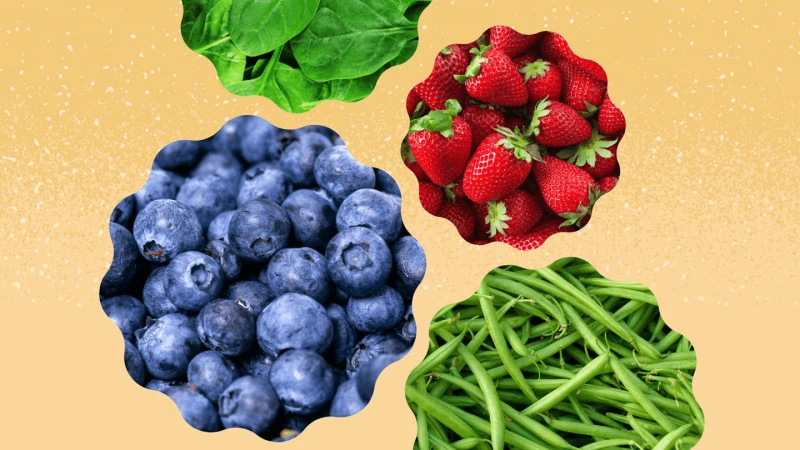Impact of Environmental Working Group’s ‘Dirty Dozen’: ‘Consumers shy away from purchasing any produce – organic or conventional’
Impact of Environmental Working Group’s ‘Dirty Dozen’: ‘Consumers shy away from purchasing any produce – organic or conventional’


Since they released their first “Dirty Dozen” list decades ago, EWG has moved onto disparaging other foods too but we maintain that calling the fruits and vegetables grown by hard-working farmers and farm workers “dirty” makes our food group, not only their first victim, but their biggest victim.
Why engage in food bullying? Because it is a profitable marketing gimmick. It gets EWG attention and publicity and helps with fundraising. Fear sells.
But at what cost? With only one in 10 Americans eating enough fruits and vegetables each day, why raise unwarranted safety fears about the more affordable and accessible versions of these healthy foods which prevents diseases, improves physical and mental health and increases lifespan?
And we understand from peer reviewed studies as well as surveys among registered dietitians that exposure to EWG’s messaging and the “Dirty Dozen” list may result in consumers shying away from purchasing any produce – organic or conventional.
Fortunately, many recognize this list for what it is – an unscientific report designed to disparage one farming method in order to promote another. In fact, fewer media outlets now cover the list and social media has largely turned against it as well.
As government agencies, non-profits, food and health care companies continue efforts to increase consumption of nutrient-dense fruits and vegetables through assistance programs, produce prescriptions and educational outreach, why would any one or any group actively work and promote disparaging, fear-based messaging about the more affordable and available forms of produce? It goes against public health initiatives everywhere.
Which is why it is so clear that this list isn’t about consumers. And it needs to stop. Imagine if EWG ceased food bullying and instead put its considerable resources into improving diets. Now that would truly benefit consumers.
Note: EWG now claims their first “Dirty Dozen” list was released in 2004 instead of 1995. It’s unclear why EWG misrepresents how old its list is but we are happy to share media articles from 1995. But think about this – if EWG is misrepresenting a seemingly small thing like when the list was first released, what else are they misrepresenting?

 | Videos | More... |

Video: Nuclear energy will destroy us? Global warming is an existential threat? Chemicals are massacring bees? Donate to the Green Industrial Complex!
 | Bees & Pollinators | More... |

GLP podcast: Science journalism is a mess. Here’s how to fix it

Mosquito massacre: Can we safely tackle malaria with a CRISPR gene drive?

Are we facing an ‘Insect Apocalypse’ caused by ‘intensive, industrial’ farming and agricultural chemicals? The media say yes; Science says ‘no’
 | Infographics | More... |

Infographic: Global regulatory and health research agencies on whether glyphosate causes cancer
 | GMO FAQs | More... |

Why is there controversy over GMO foods but not GMO drugs?

How are GMOs labeled around the world?

How does genetic engineering differ from conventional breeding?
 | GLP Profiles | More... |

Alex Jones: Right-wing conspiracy theorist stokes fear of GMOs, pesticides to sell ‘health supplements’




 Viewpoint — Fact checking MAHA mythmakers: How wellness influencers and RFK, Jr. undermine American science and health
Viewpoint — Fact checking MAHA mythmakers: How wellness influencers and RFK, Jr. undermine American science and health Viewpoint: Video — Big Solar is gobbling up productive agricultural land and hurting farmers yet providing little energy or sustainabilty gains
Viewpoint: Video — Big Solar is gobbling up productive agricultural land and hurting farmers yet providing little energy or sustainabilty gains Fighting deforestation with CO2: Biotechnology breakthrough creates sustainable palm oil alternative for cosmetics
Fighting deforestation with CO2: Biotechnology breakthrough creates sustainable palm oil alternative for cosmetics Trust issues: What happens when therapists use ChatGPT?
Trust issues: What happens when therapists use ChatGPT? 30-year-old tomato line shows genetic resistance to devastating virus
30-year-old tomato line shows genetic resistance to devastating virus California, Washington, Oregon forge immunization alliance to safeguard vaccine access against federal undermining
California, Washington, Oregon forge immunization alliance to safeguard vaccine access against federal undermining The free-range chicken dilemma: Better for birds, but with substantial costs
The free-range chicken dilemma: Better for birds, but with substantial costs ‘You have to treat the brain first’: Rethinking chronic pain with Sanjay Gupta
‘You have to treat the brain first’: Rethinking chronic pain with Sanjay Gupta
